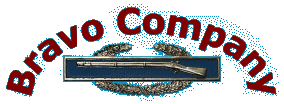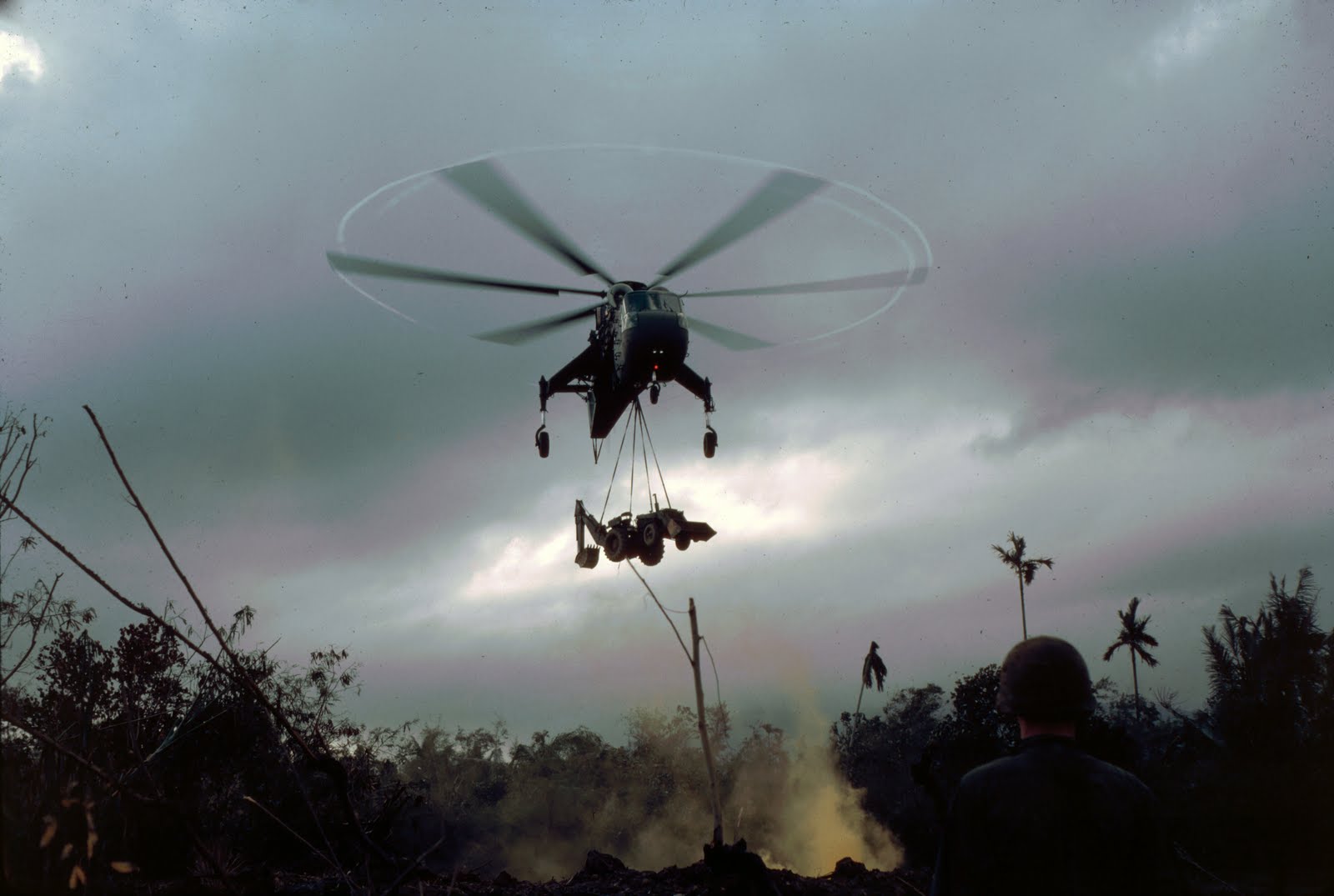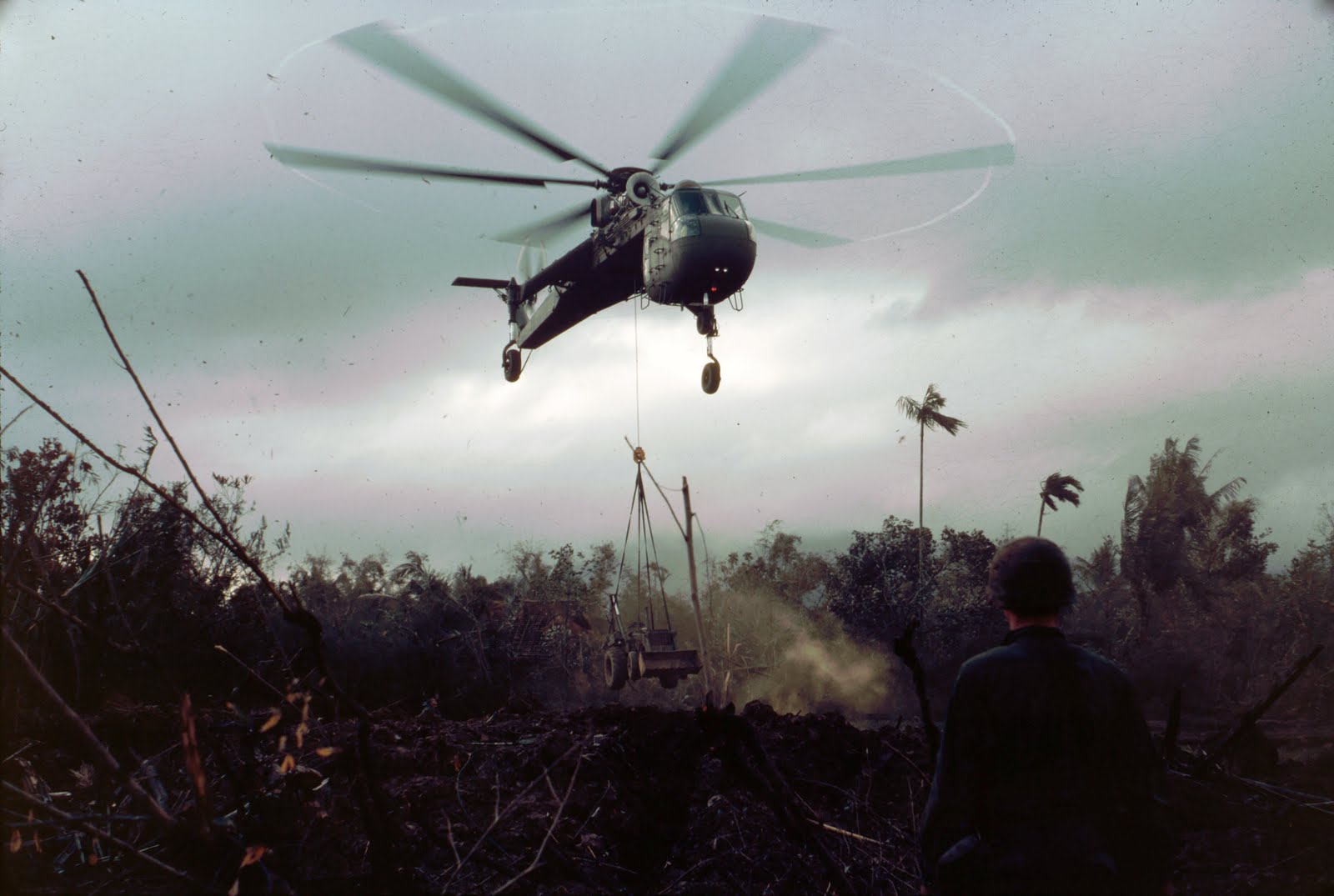

2nd Battalion, 8th Cavalry Regiment 1967-68

 |
|
 |
The Battle of Tam Quan
|
The Battle of Tam Quan took place between 6 and 20
December, and was one of the largest battles in our division area of
operations during 1967. This battle began and ended with the discovery of
enemy radio antennas secured to the top of tall trees. The battle started
when a helicopter scout team discovered an enemy radio antenna late in the
afternoon of 6 December and our brigade
started deploying the following
units as they became available: 1st and 2nd
Battalions, 8th Cavalry; 1st Battalion, 12th
Cavalry; and 1st Battalion, 50th Infantry
(Mechanized). As the 1st Bn 50th Mechanized Infantry
had recently deployed to Vietnam and placed with the brigade, this was their
first major battle and they made good use of their M113 armored personnel
carriers equipped with 50 cal. machine guns. In addition, elements of the
ARVN 40th Infantry Regiment particpated in this battle.
The enemy force was one of our well-known opponents, the 22nd NVA Regiment, which was in the process of preparing to conduct a major attack on ARVN installations at Tam Quan. This was one of those rare occasions where we discovered and surprised a large enemy force, and where we initiated and controlled the battle. The heaviest fighting took place south of Tam Quan, sometimes involving hand-to-hand battles in enemy trenches, and the battle was characterized by the massive use of artillery, tactical air support, and numerous air assaults by 1st Brigade units, while the mechanized companies were used to fix the enemy and attack fortified positions. |
|
|
|
On 7
December, Task Force 1-8 Cav, composed of 1st Battalion, 8th
Cavalry, and a company of the 50th Infantry, joined the 40th
ARVN to attack the NVA enemy from the west, while our battalion was given
the mission of establishing blocking positions by the South China Sea coast
to prevent enemy forces from escaping along the coast. Both TF 1-8 and the
ARVN attacking units encountered stiff resistance. Around 0900 hours, two
companies of 2nd Battalion, 8th Cavalry were air
assaulted into landing zones – Bravo Company at map coordinates BS 935065,
and Charlie Company at BS 930075. As we moved to take up our blocking
positions, there was a lot of 50 cal. machine gun bullets flying over our
heads and we assumed that this was fire from the 50th mechanized infantry
company.
Bravo and Charlie companies searched
their respective areas and at about 1500 hours, both companies converged at
a wooded area in the vicinity of BS 926072. The two commanders, Captain
Peter O’Sullivan and Captain Thomas Flatley, discussed the new mission they
had just received from battalion directing both companies to attack from
east to west, while Task Force 1-8 Cav
and elements of the 40th
ARVN attacked from west to east, and with the enemy regiment in between
these two forces. The plan of attack that we developed and coordinated was
as follows: Charlie Company would proceed due west across a large rice paddy
and through the woods on the other side, while Bravo Company would move
southwest for about 500 meters and then west. We would coordinate our
movement so that both of our units were on line as we moved west and to
prevent friendly casualties in the wooded areas, we established a boundary
line between our two units.
At
1645 hours, Charlie Company was halfway across the rice paddy when the enemy
opened fire from the treeline, killing and wounding many members of the
company including Captain Flatley and several other members of his command
group. According to the 1st Brigade Combat Operations After
Action Report, Charlie Company “was pinned down by intensive automatic
weapons fire while crossing a rice paddy vicinity BS 922072”. Meanwhile,
Bravo Company maneuvered over to the southern flank of this woodline and
then proceeded north to attack the enemy force that had Charlie Company
pinned down in the rice paddy. As Charlie Company was leaderless during this
period, there was a major problem in establishing control of their small
arms fire while we moved north in front of their positions. Eventually, the
Battalion Commander, LTC John Stannard, took command of Charlie Company and
they were finally extracted from the rice paddy at 1900 hours. Later that
evening, Captain Michael Berdy assumed command of Charlie Company. However,
two weeks later
in yet another tragic event, Captain
Berdy and several members of his Charlie Company command group were killed
when their helicopter crashed on 26 December 1967. And yet another
tragedy occurred two weeks later when Captain Charles Wilcox, who assumed
command of Charlie Company on 26 December 1967, was Killed In Action by an
enemy grenade on January 9, 1968. (NOTE: The Vietnam War
Memorial states that Captain Flately was killed in action on 8 December,
whereas the Combat After Action Report states 7 December).
The other two companies of our battalion, Alpha and Delta, make their appearance in the Combat After Action Report on 10 December. This indicates that they replaced Bravo and Charlie companies in the Tam Quan battle on this date and we were probably assigned the mission of securing firebases. Since Bravo Company had been conducting combat operations continuously since early November, we deserved a break. However, as the following events show, we were back in the battle sometime prior to 19 December. On 19 December, Bravo Company was located several kilometers north of the Bong Son River and close to the South China Sea, and conducting a broad sweep in a southerly direction towards the river. Around noon, one of our platoons discovered an extensive series of trenches that had been occupied within the last twelve hours by a large enemy unit, which we estimated to be at least a battalion-sized unit. We reported this to Battalion Headquarters and requested a helicopter scout team to search the area to the south of our position. On the other side of the Bong Son River, in a village called An Nghiep, the scout team located an enemy antenna attached to the top of a tree and what appeared to be a bunker complex underneath. This was the start of the final firefight in the Battle of Tam Quan and this combat operation was controlled by our battalion. Delta Company combat assaulted to the east of An Nghiep, but received heavy fire as they approached the village and they were ordered to withdraw. The next action was to deploy a Psychological Warfare Team. The team orbited the village in a helicopter, urging civilians to leave the area and encouraging the NVA forces to surrender. A few civilians departed the area, but the NVA refused to surrender. Thereafter, artillery fires were directed on known enemy positions and enemy bunkers were bombed with a total of six air strikes. Prior to the commencement of these air strikes, Bravo Company was air assaulted to a LZ south of An Nghiep. During the commencement of the airstrikes, both Bravo Company and Delta Company started moving towards the hamlet, and Charlie Company 1/50 Mech started moving into position on the north bank of the Bong Son River. During our advance towards An Nghiep, jet fighter bombers flew directly overhead firing 20mm cannons (the hot brass bounced off our helmets) and then dropped 1000 lb bombs on the enemy bunkers in An Nghiep. By nightfall, the village area was surrounded by three companies under the command of LTC Stannard, who had deployed a small battalion command group that was collocated with Bravo Company. These three units were Bravo Company, Delta Company, and Charlie Company, 1st Battalion, 50th Mechanized Infantry. We had illumination during most of the night and NVA soldiers attempted to entice us to leave our positions by crying out for help. One NVA soldier attempting to break out of the encirclement was so surprised when he stumbled into one of our positions (Cheyenne?) that he dropped his weapon and fled. A known weak point of our encirclement was the Bong Son River which was covered from the north bank by Charlie Company 1/50, who had been assigned a screening mission covering a very large sector. During the night, many of the enemy escaped by crawling unhindered from the village of An Nghiep to the river and swimming down the Bong Son River, while others were killed or wounded as they attempted to escape through our lines. The following is a
photograph of the hamlet of An Nghiep, scene of the 19 December operation
during the Battle of Tam Quan.
AIRSTRIKES ON ENEMY BUNKERS 19 DEC 67 All available forces of the 1st Brigade were used to pursue the remnants of
this enemy battalion who were attempting to escape to their sanctuaries in
the mountains west of Bong Son. Cheyenne was part of these pursuing forces
under the operational control of C/1/50th Inf (Mech). On 20 December,
Cheyenne was transported across the Bong Son River on Armored Personnel
Carriers (APCs) and conducted search and destroy operations in conjunction
with C/1/50th Inf (Mech). The following photographs were taken during this
operation:
CHEYENNE ON APCs CROSS BONG SON RIVER 20 DEC 67 The Battle of Tam Quan officially ended at midnight 20 December, however, our battalion units “remained in An Nghiep for three days digging through the demolished bunkers and fortified positions recovering enemy bodies and weapons”. In the following photo, the excavator that we used for digging out the bunkers and fortified positions was delivered by a CH-54 Crane to our position at An Nghiep hamlet.
 BACKHOE AIRLIFTED TO OUR POSITION BY CH-54 CRANE 20 DEC 67  Thanks to Ray Bono for above five photographs.
We were extracted
from An Nghiep on 24 December and spent the night on LZ English. We had BBQ
chicken that evening and we were served Christmas dinner with all the
trimmings shortly before noon on 25 December. At 1330 hours on 25 December,
we were back in the field conducting combat operations (it is possible that
we relieved Charlie Company who went to the Bob Hope Show). |
Dropdown menu by http://www.milonic.com
http://www.milonic.com/removelink.php